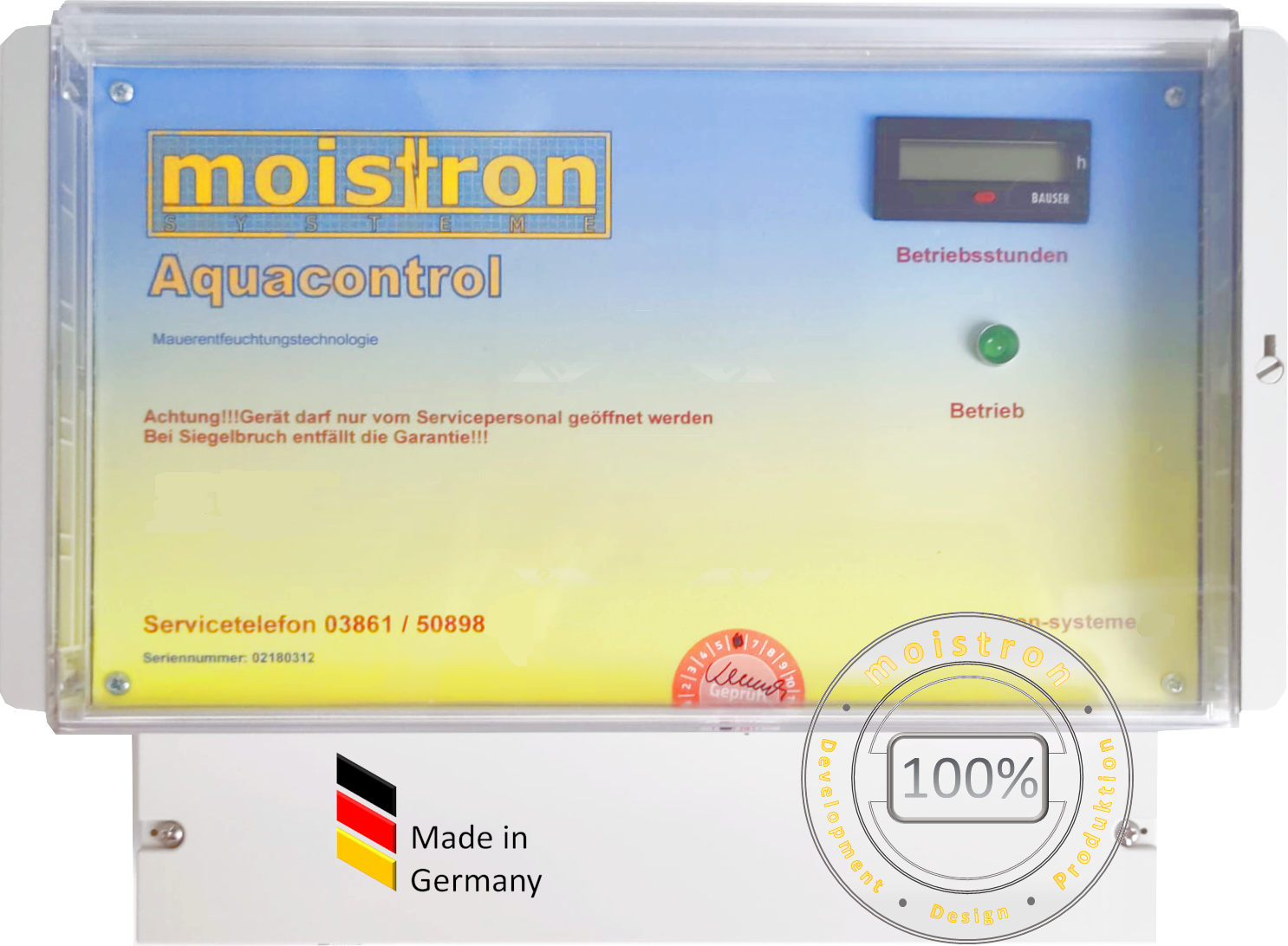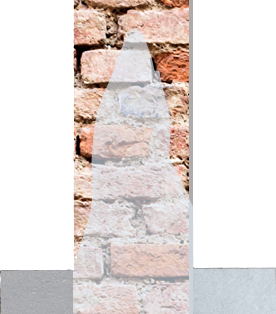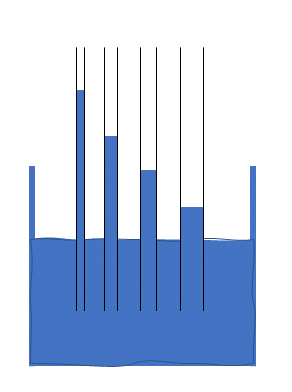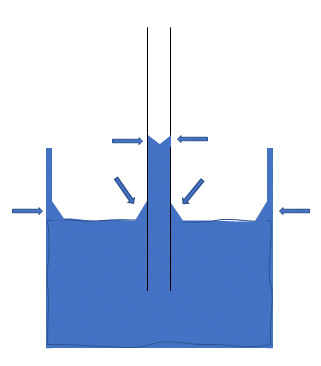
Image rights: © PantherMedia /vicnt2815/Deugefin GmbH
Rising soil moisture

Damp buildings are not uncommon
As the Federal Statistical Office (Destatis) reports, 14% of the German population estimated that they lived in apartments or houses with moisture damage in 2008. These include leaky roofs, damp walls and foundations, and rot in window frames and floors. This result was determined from the EU-SILC 2008 survey. (European Union Statistics on Income and Living Conditions)
This means that with 41 million households in Germany in 2023, 5,740,000 households nationwide will have to deal with moisture problems. (Source Federal Statistical Office)
In North Rhine-Westphalia alone, as the most populous federal state, 270 moisture damages were identified in 909 apartments inspected. Significant defects were mainly found in old buildings built in 1979 and older (Federal Health Gazette 8).
The problem with soil moisture
Moisture rising from the ground is a major problem for many buildings and is often difficult to solve. Conventional methods such as digging up and laying drainage are often only possible to a limited extent because most external walls in inner-city areas cannot be accessed. The reasons for rising soil moisture are the horizontal barriers that are often missing or have become increasingly permeable over the years. An estimated 90% of all cases are affected by this and have so far only been able to be professionally remedied with a great deal of financial effort and intervention in the building structure.

Rising soil moisture
Rising soil moisture occurs when the moisture present in the soil rises upwards in the masonry through capillaries or capillary action (or wick effect). Easily recognized by damp edges on walls, ceilings and floors.
Cracks in the plaster, UUnevenness and damp smells can be a sign of rising soil moisture. Moisture transport takes place between connected building materials. This means that capillary moisture penetration can take place both vertically and horizontally. As a rule, the moisture penetration within the masonry is higher than in the surfaces such as plaster.
Younger properties are usually well protected against soil moisture. Good sealing, modern sealing processes and new building materials, when used correctly, do not allow soil moisture to pass through. But here too, moisture can penetrate into the masonry due to material defects or incorrect use of sealing materials. Then a quick remedy is necessary.
Missing or defective horizontal barriers and missing basement waterproofing are the main causes of rising soil moisture, which is inevitably found in the ground.
© moistron systems
Earth moisture and capillary action
Porous building materials that are unprotected against earth moisture absorb earth moisture like a sponge. A short time later, the existing soil moisture begins to increase. This means that the capillaries in the wall now fill with the inevitable water from the ground. The water transports salts in the ground into the masonry. Easily recognizable, among other things, on “flowering” house walls.
Moisture moves away due to the constant rise in the capillaries. This goes hand in hand with the alignment of the
Water molecules (so-called Dipoles
), with the negative pole automatically aligning upwards to rise through the wall pores. This physical phenomenon is called capillarity or wicking. The causes of capillarity include the surface tension of the water, the amount of moisture, the building structure and the evaporation possibilities as well as electrochemical processes, which can also influence the rise of the moisture. Climbing heights of up to 9 m above the ground have already been determined. Like a tree that supplies itself with water via capillaries, the water rises to a physical limit.
Capillarity or wicking effect

Capillary effect:
Moisture rises (capillary ascension) against gravity. The narrower the capillary is (the capillary is a narrow tube, e.g. a straw), the higher the moisture can rise. The narrower a capillary is, the easier it is for moisture to rise. Because the water molecules always want to stay close together. This is easier for water in narrow tubes because they don't have to allow so many molecules to rise next to each other. Ie capillarity is caused by the surface tension of liquids themselves and the boundary surface tension of liquids with a solid surface, the so-called adhesion force.

Adhesion force:
Under theAdhesion forceis to understand attraction between the particles of different substances. Two different substances meet and stick to each other. For liquids, it is the force between two condensed phases. Why adhesion exists physically has not yet been fully researched. The fact is that at the boundary layer, molecules pull their neighboring molecules upwards. If the molecules are closer together, they can rise higher.
Determine humidity
It is not so easy to determine whether a wall or walls are too damp. When is a wall too damp? In addition to structural damage, a number of other circumstances can affect moisture in a wall. Primarily it depends on the building materials used. This is how the factors play
- Heat capacity
- hygroscopic properties of the building material
- Thermal conductivity
- and diffusion resistance
a major role. And the natural moisture content of the building material also plays a role. It also depends on the environment in which the walls/walls were built. All of these factors result in the practical moisture content of the masonry. Simply put, if a building material is exposed to a certain ambient humidity for a long period of time, a relative humidity condition results.
This value can then be assigned to individual building materials from building moisture tables. Other tables that an expert uses to determine moisture refer to hygroscopic values.
It is actually not possible for a layperson to determine the actual moisture condition of a wall. The natural moisture state of walls/walls is determined according to DIN 4108. This value takes the mentioned factors into account.
Important NOTE
Do yourself a favor and do not attempt to dry it yourself. You should always first have it determined where the damage or moisture is coming from. Damage can quickly occur to:
- Balcony seals
- Roof seals
- downspouts
- Water-carrying pipes within the house/pipe burst
- Drainage errors
- through pressurized water
- through capillary rising soil moisture
- through heavy rain
- through heat/cold bridges (incorrect ventilation, etc.)
- etc.
Basically, reasons for moisture can affect the house from all sides, including from the inside. If you now attempt to dry the drying and the damage has not been verified beforehand, this could result in significantly more serious consequential damage and, above all, high costs.
Example
The cellar is moistened by capillary soil moisture. The walls show corresponding signs.
First thought: setting up a drying device. This air drying device (condensation dryer) removes moisture from the air. The water collected in a container can then be disposed of. What happens if the damage has not been professionally repaired beforehand? They remove moisture from the room air. But since the damage has not yet been repaired, the water seeps through the damaged area or the capillaries. This draws even more water into the wall without causing a drying effect. Ie there is no end. Initial successes can quickly disappear once the water has subsided. If there is major damage to the home's moisture barrier, the drying device will have to run constantly without any improvement. You will incur high costs for the drying device, whether renting or purchasing, as well as electricity costs, without achieving any improvement.
Aquacontrol 102 works with capillary rising soil moisture. No drying device is necessary. Aquacontrol 102 stops the capillary rise of water and allows the moisture in the capillaries to flow back into the soil. Maintains this condition Aquacontrol 102 as long as the module is supplied with power.
And, Aquacontrol 102 keeps the building or the masonry in its natural moisture state and therefore capillary active. No sealing of the walls from the inside, no chemical moisture influence. Older and old buildings must be kept open to diffusion. If you take away the possibility of diffusion, i.e. the absorption of excess moisture into the wall and release of the moisture into the room when it is dry, you usually achieve the opposite of what you wanted to achieve. Namely, basement rooms that are still uninhabitable or at least difficult to use. Where should the moisture go once the walls have been compacted? It is simply not possible to raise an old building to a modern level with half-hearted attempts at drying (see "Determining humidity").
For this reason it is so important Aquacontrol 102 to be used when soil moisture rises . No use of chemicals, no silicification of the masonry, no injections of resins or other substances. In this way, the possibility of diffusion is retained to the maximum.
Aquacontrol 102 should not be used in the case of pressurized water, tap water damage or influences that cannot be traced back to capillary soil moisture.









